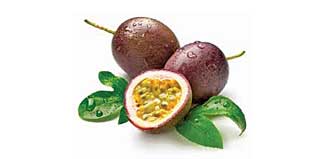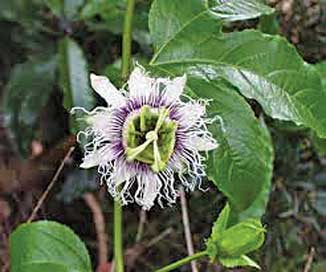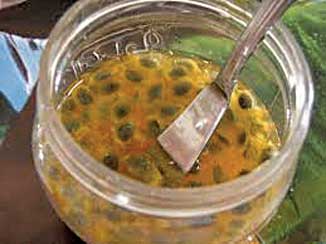Focus on passionfruit
Juicy, tangy and fragrant – what isn’t there to like about subtropical passionfruit – and the added bonus of fruiting in a relatively short time – from about eight to nine months after planting. The purple fruit also offers good amounts of vitamin A, B and C plus protein, carbohydrates, iron and flavonoids – no wonder it’s my all-time favourite fruit.
For quick establishment plant your passionfruit in spring, once all danger of frost has passed. The fruit is not wind hardy so will need protection from cold winds, and they’re not that fussed on salty, maritime locations. However, they do like plenty of sun, so pick a sunny spot and plant with plenty of compost – adding some sand will help improve drainage – plants require a light, free-draining soil (if you have heavy soil then planting in a container may be your best option – ensure you use a good quality potting mix formulated for containers).
Add a slow release citrus fertiliser to the bottom of the soil before planting, firm down and water well.
Provide support for these climbers – it needs to be strong enough to take weight when fully grown. The root system of passionfruit is very shallow but extensive – mulch to retain moisture, keep roots cool and suppress weeds but make sure mulch is kept away from the stem. It’s also particularly important to water regularly throughout the flowering and fruiting period from spring until the end of summer – when watering keep water off foliage to avoid fungal problems.
Like citrus, passionfruit are heavy feeders. It’s a good idea to feed at least twice over the spring, summer and autumn months with slow release citrus fertiliser – over the fruiting period feeding with a liquid fertiliser is also recommended.
Fruit is formed on current season’s wood so prune in early spring to encourage new growth. Prune hard one lateral annually. Train your vine up a fence or wall removing all laterals until it reaches the height you require then pinch out the top. Pruning (should be done in October or November) establishes the framework of leaders from which laterals grow. Cutting out denser growth allows better air circulation and fruit development the following season.
Passionfruit are ripe when skin turns purple and fruit falls to the ground, from mid-summer onwards. Your consistent watering will prevent fruit drop and premature wrinkling of the skin.
The vine also has great decorative value – it looks stunning grown on a pergola where the large green leaves can provide shade all year, with the added benefit of a vibrant flower display in summer and tasty fruit in late summer/autumn.

Passionfruit Honey
Ingredients
10 passionfruit
30g butter
¾ cup sugar – you may need to vary quantities of sugar depending on your taste and species of fruit you’re using.
1 egg
Method
Combine passionfruit pulp with butter, sugar and lightly beaten egg in the top of a double boiler.
Cook over hot water, stirring all the time until mixture is thick and of spreading consistency.
Pack and seal in small jars.


